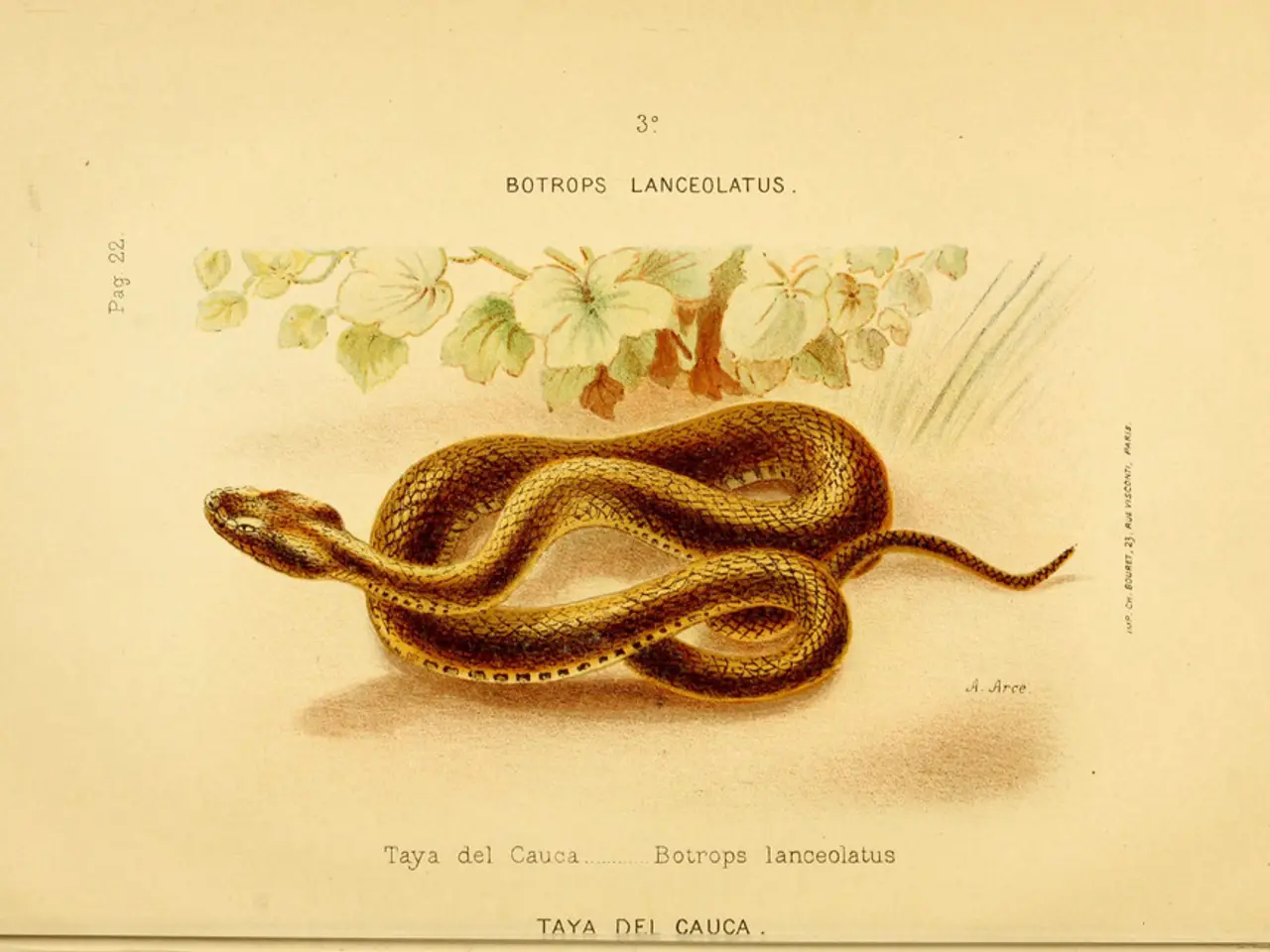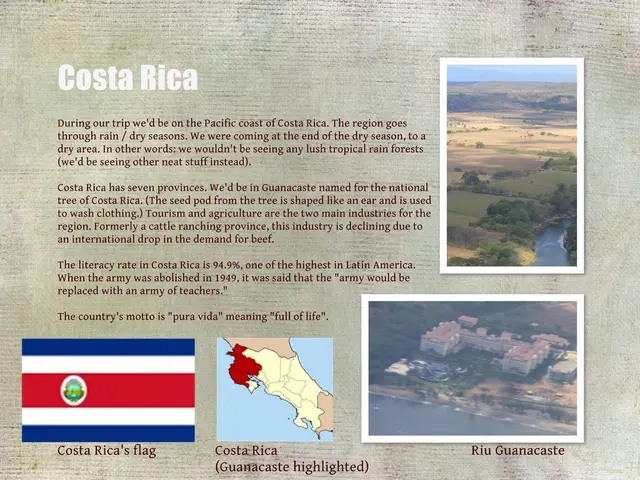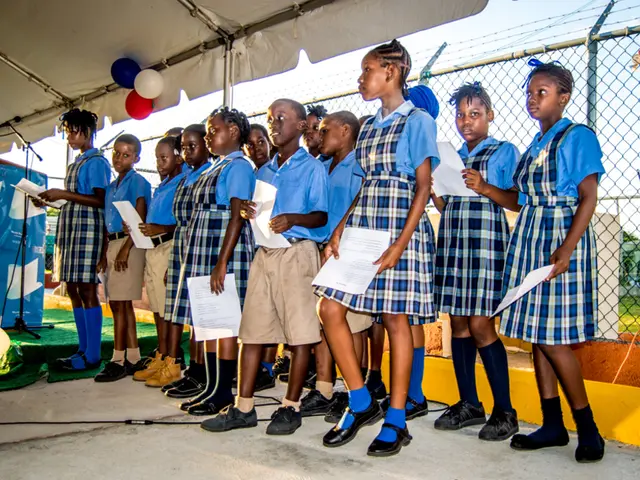"Rehabilitating rattlesnakes from the brink of extinction by reviving their image and shattering misconceptions"
More than 50 species of rattlesnakes call North America home, but many are threatened or endangered due to human activities such as the pet trade, roadkill, and habitat destruction. One such event that has raised concerns among conservation biologists is the annual Sweetwater, Texas rattlesnake roundup, known as the world's largest rattlesnake roundup.
The roundup, held since 1958, involves the capture of thousands of rattlesnakes, which are bought from hunters at a fluctuating per-pound rate and sold to the coliseum's cookshack for frying. This large-scale collection has significant implications for local rattlesnake populations, with substantial removal of rattlesnakes from the wild around Sweetwater. While precise population impacts are complex to assess, such large-scale collection can reduce local rattlesnake numbers and potentially disrupt ecological roles these snakes play, such as controlling rodent populations.
The event reflects broader negative cultural attitudes toward snakes in the U.S., including fear and persecution, which contribute to intentional killing and collection of rattlesnakes beyond just this roundup. For instance, the roundup's education pit features a handler who antagonizes snakes with a balloon until they strike, causing fear and excitement in the crowd.
Negative folklore and fear-driven persecution like this roundup hinder reptile conservation efforts globally. Such events contrast with efforts by conservation groups that focus on protecting reptile species through habitat preservation and reducing overexploitation. Despite the event, some organizations promote rattlesnake conservation, emphasizing sustainable approaches and education to improve attitudes toward these reptiles.
In summary, the Sweetwater rattlesnake roundup significantly affects local rattlesnake populations through large-scale capture and reflects broader challenges in reptile conservation tied to cultural fear and persecution. It poses ethical and ecological concerns but also highlights the need for balanced conservation strategies that respect cultural traditions while promoting species sustainability.
Meanwhile, research is being conducted to understand the impact of urban development on rattlesnake populations. Herpetologist Matt Goode, who has been capturing snakes for over 20 years, is studying how the ongoing conversion of pristine desert to housing developments affects snakes. For example, more than 7,000 snakes have been captured on the cart paths of Oro Valley's Stone Canyon golf course and the private roads surrounding it.
The Stone Canyon snakes are growing larger, producing more offspring, and expanding their ranges among the McMansions. This could be due to an abundance of food sources such as rodents, birds, and eggs, and the rocky outcrops provide plenty of places to hide. However, this growth and expansion pose challenges for co-existence with humans, as rattlesnakes can potentially pose a threat to pets and even people if they feel threatened.
In contrast to the Sweetwater roundup, some areas are seeing an increase in rattlesnake populations. In Pennsylvania, herpetologist Thomas LaDuke found pregnant female rattlesnakes on Hawk Mountain, a 2,600-acre reserve. This increase in rattlesnake populations highlights the need for careful conservation strategies to protect these reptiles and their habitats.
In conclusion, the relationship between humans and rattlesnakes has always been complex, with a history of both reverence and persecution. As urban development continues to encroach on rattlesnake habitats, it is crucial to balance conservation efforts with cultural traditions and economic considerations. By promoting sustainable approaches and education, we can help ensure the survival of these iconic creatures for future generations.
References:
- [Baskett, S. (2005). Rattlesnakes: A Natural History. University of California Press.]
- [Lannoo, M., & Brown, J. D. (2006). Rattlesnakes: A Complete Guide. Stackpole Books.]
- [National Park Service. (n.d.). Rattlesnakes. Retrieved from https://www.nps.gov/yose/learn/nature/rattlesnakes.htm]
- [U.S. Fish and Wildlife Service. (n.d.). Rattlesnakes. Retrieved from https://www.fws.gov/southwest/es/herpetology/rattlesnakes.html]
- [Wilson, J. D., & Ruff, D. C. (2008). The Future of Rattlesnakes. University of Chicago Press.]
- Education about rattlesnakes' crucial roles in biodiversity and the environment is essential to combat negative cultural attitudes toward them, such as fear and persecution.
- The exploration of urban development's impact on rattlesnake populations is an integral part of environmental science, contributing to our understanding of these creatures' lifestyle and medical conditions.
- Rattlesnakes, as endangered species, require conservation efforts, with a focus on habitat preservation, reducing overexploitation, and promoting sustainable approaches in wildlife and nature.
- General news coverage is essential to highlight the importance of protecting rattlesnakes, given their significant contributions to earth's biodiversity and the broader ecosystem.
- Conservation strategies should consider both human migration patterns and the potential displacement of rattlesnake habitats, as these factors can influence species distribution and conservation needs.
- The environmental impacts of large-scale events like the Sweetwater rattlesnake roundup demonstrate the need for ethical considerations in conservation efforts, ensuring that such events do not disrupt ecosystems and threaten endangered species.
- Scientific research on rattlesnakes can lead to discoveries in medical conditions, as these reptiles share various physiological traits with humans; thus, understanding them can contribute to healthcare advancements.
- As rattlesnake populations expand in certain areas, like Pennsylvania, it underscores the necessity for ongoing education and self-development in conservation biology, to accommodate these changes effectively.
- The entertainment industry plays a role in perpetuating negative stereotypes about rattlesnakes, which can negatively impact public opinion and conservation efforts; more responsible portrayals are needed.
- Engaging communities in rattlesnake conservation efforts can foster a collective responsibility for the earth's biodiversity and may lead to positive shifts in attitudes toward these species, ultimately benefiting the environment and ensuring their survival for future generations.




